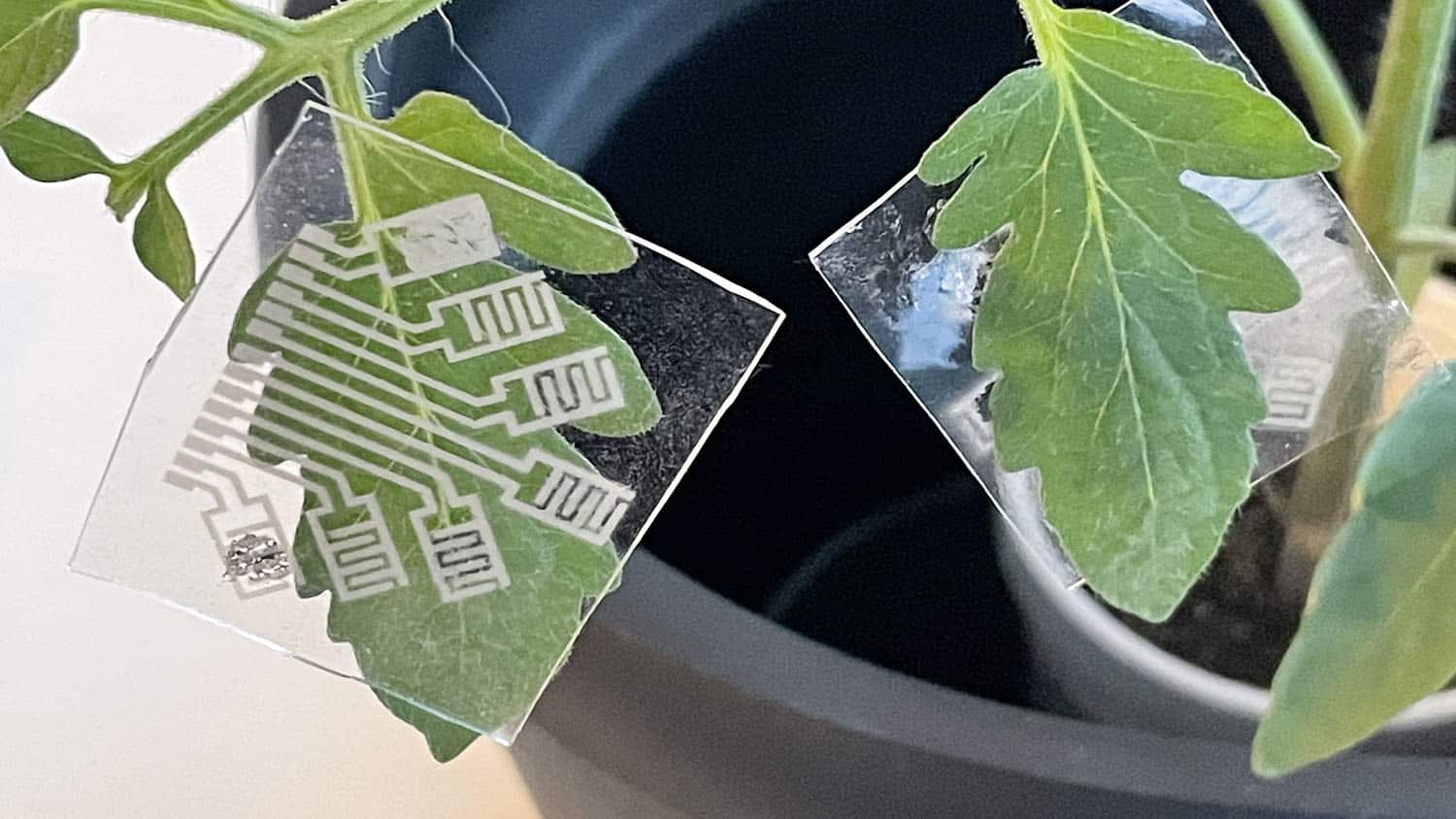NC State Scientists Fast-Track R&D for Sensors That Detect Plant Diseases Early

NC State University researchers are taking rapid steps to bring promising plant disease detecting technologies out of the laboratory and into the commercial marketplace.
With a one-year National Science Foundation grant of $650,000, the team’s engineers, chemists, material scientists, biologists and data scientists will work with growers, private companies and government agencies to finetune two miniature sensing technologies and to better understand what the most urgent needs are, how the products should be designed to meet user needs, and how to scale up mass production.
Research led by Qingshan Wei, an associate professor in NC State’s Department of Chemical and Biomolecular Engineering and a faculty member with the Emerging Plant Disease and Global Food Security cluster and N.C. Plant Sciences Initiative, has yielded two sensing technologies to monitor crops for specific types and combinations of volatile organic compounds.
The Role of Volatile Organic Compounds
All plants release VOCs, but the type and concentration of those VOCs change when a plant is diseased. Each disease has its own signature profile of VOCs, so monitoring for VOCs can identify disease threats and alert farmers so they can take early action to protect crops before the plants show visible symptoms.
The technologies developed at NC State are colorimetric VOC sensor arrays and wearable VOC sensor patches. The arrays use paper embedded with an array of chemical reagents that change color when they come into contact with a specific group of VOCs. By evaluating those color patterns, users can detect certain pathogens.
The patches are electronic devices that can be applied directly to a plant to continuously monitor for different pathogens; these patches also incorporate sensors that monitor for temperature, humidity, salinity and other factors.
The patch is a noninvasive technology that can give you continuous and then long-term monitoring, and there’s almost no existing competing technology.
Expanding the Devices’ Potential
So far, the devices have been tested for tomato diseases, but they could be adapted for other plant diseases and other crops, as well as for human and animal health monitoring, says Wei, the project’s principal investigator.
Co-principal investigators are Alper Bozkurt of the Department of Electrical and Computer Engineering, Yong Zhu of the Department of Mechanical and Aerospace Engineering, Coby Schal of the Department of Entomology and Plant Pathology and Nelson Vinueza of the Department of Textile Engineering, Chemistry and Science.
“With the VOC sensor technology, we have previous publications that demonstrate the proof of concept,” Wei says. “The idea now is to further mature or develop this technology with the end user in mind. … Eventually the most impactful outcome will be products that can be rapidly put into the technology transfer pipeline for end users to deploy for different applications.”
Next Steps
This year, the team will be exploring ways to use machine learning, as well as biologically inspired design, to improve the sensors’ performance. Using NC State’s Weaver Dye Library which has 98,000 dyes, the researchers plan to develop a prediction model that could be used to expand the screening capabilities of the colorimetric VOC sensor.
To improve the wearable sensors, they plan to study an insect-inspired wax coating that could serve as a chemical lens for focusing VOCs onto the sensors, making the testing more sensitive.
This NSF grant will allow us to see how far we can go with technology and whether we can really put it into the hands of real users.
In addition, the team plans to survey growers and host a summer workshop with industry partners. Investigators will also participate in the NSF’s Innovation Curriculum on human-centered design, team science, early-stage prototyping, communications, storytelling, pitching and more.
At the end of the project, the team will present formal proposals to scientists and pitches to an industry panel, vying for additional NSF funding to further speed their technologies to market.
“Diagnostic disease sensors have a lot of potential. The patch is a noninvasive technology that can give you continuous and then long-term monitoring, and there’s almost no existing competing technology,” Wei says. “This NSF grant will allow us to see how far we can go with technology and whether we can really put it into the hands of real users.
“And after this, either a startup company or licensed intellectual property will be in the near future.”
The Role the N.C. Plant Sciences Initiative Plays
The N.C. Plant Sciences Initiative has contributed to the research and development of the VOC sensing technology in several important ways, Wei says. The initiative’s commercialization and entrepreneurship programs has been, and will continue to be, an asset, as has the state-of-the-art Plant Sciences Building at NC State.
In addition, earlier field validation tests supported by a three-year Game‐Changing Research Incentive Program for Plant Sciences Initiative, or GRIP4PSI, grant from NC State University yielded results that encouraged the team to continue their work.
“The GRIP4PSI funding is one reason we are at a slightly mature stage now for future optimization and development,” Wei says.
- Categories:


